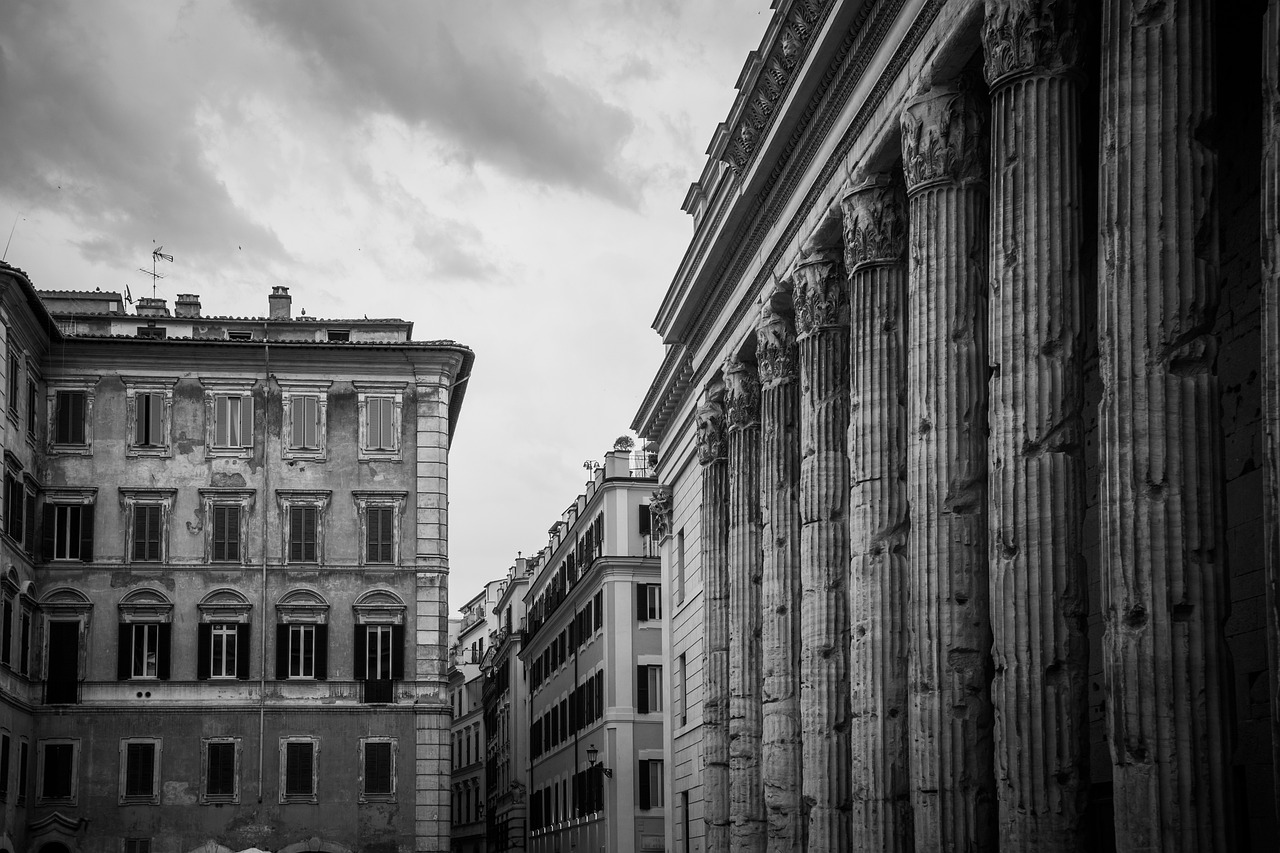Overview of Jupiter in Roman Mythology
Jupiter, known as Iuppiter in Latin, held the esteemed position of the paramount god within the Roman and Latin pantheon, overseeing the skies, weather, and the principles of order and state governance. His characterization closely aligns with the Greek god Zeus, revealing a shared lineage in mythology and iconography, although each maintained distinct religious practices. The epicenter of Jupiter’s worship was the grand temple of Jupiter Optimus Maximus on Capitoline Hill in Rome, asserting his dominance in the religious hierarchy.
Comparison with Zeus
Jupiter served as the Roman equivalent of Zeus, the chief deity of the Greeks. While much of his mythology and representations are derived from Zeus, both gods cultivated unique cults that reflected the cultural contexts of their respective worshippers.
Worship Practices
The primary site for Jupiter’s veneration was the temple of Jupiter Optimus Maximus. Within this sacred structure, he was part of the “Capitoline Triad,” which included Juno and Minerva. Worship was characterized by various offerings and grand festivals, where sacrifices were made, demonstrating the Romans’ commitment to honoring their god.
Jupiter and Numa Pompilius
A distinctive Roman narrative showcases Jupiter’s engagement with Numa Pompilius, the second king of Rome. In this lore, Numa interacted with both the woodland deities and Jupiter, who imparted sacred practices to ensure the proper worship of the Roman gods, thus establishing a crucial connection between the divine and the early governance of Rome.
Powers and Attributes
Jupiter’s realm encompassed not only weather phenomena like lightning and storms but also social and political order. He was revered as a deity of agriculture, ensuring fruitful harvests, and held sway over oaths and sacred vows, often invoked during weddings and solemn agreements.
His emblematic symbols include the thunderbolt, signifying his control over storms, and the scepter, representing his supreme authority. Artistic renderings frequently portrayed him with an eagle or a chariot pulled by white horses, reinforcing his exalted status.
Iconography
Jupiter’s visual depictions often align with that of a powerful figure, descending from the grand tradition of the Capitoline Triad. He was sometimes illustrated as a muscular figure wielding a thunderbolt, with artistic variations presenting him either standing or seated alongside Juno and Minerva. During the Empire, emperors emulated Jupiter, intertwining their legacies with his divine deeds.
Etymology and Titles
The etymology of “Jupiter” derives from the Indo-European roots for “sky” and “father,” suggesting a deity representative of the heavens. He held numerous titles reflecting his various aspects, including Optimus Maximus, Tonans, and Victor, among others, each pertinent to his diverse roles in society and religion.
Family Hierarchy
Jupiter’s familial structure mimicked that of the Greek pantheon, with deities like Neptune and Mars corresponding to Poseidon and Ares respectively. His offspring included gods such as Vulcan and Minerva, illustrating a continuity of mythological themes across both cultures.
Origins and Cultural Interactions
The roots of Jupiter can be traced back to other Indo-European sky gods, and over time, his character evolved, becoming synonymous with stability and authority. Romans adapted numerous elements from Greek mythology, crafting a narrative that celebrated the unblemished legitimacy of Rome’s divine protector.
Mythic Endeavors and Relations
Jupiter’s legend extends to significant episodes of Roman history, particularly in the context of warfare and governance. From aiding in Rome’s establishment through Aeneas to influencing military endeavors during the Republic, Jupiter remained integral to defining Rome’s destiny.
Jupiter Elicius and Numa
The lore surrounding Numa Pompilius showcases the foundational connection between Jupiter and Roman statehood, where Numa’s efforts to communicate with Jupiter established crucial rituals, including the protection against lightning and securing divine favor.
Tales of Tullus Hostilius
Contrastingly, the story of Tullus Hostilius reveals the consequences of disrespecting Jupiter. The king’s erroneous rituals led to his untimely demise, emphasizing the importance of adherence to divine protocols in Roman religion.
Temples and Practices of Worship
The most notable temple dedicated to Jupiter was located on Capitoline Hill, which served as the principal center for his worship, along with other significant sites scattered across Rome. Festivals such as the Ludi Romani and various agricultural celebrations showcased Romans’ reverence towards Jupiter through public games, feasts, and rituals, reinforcing social unity.
The Role of the Flamen Dialis
At the core of Jupiter’s worship was the Flamen Dialis, the high priest responsible for overseeing all rituals dedicated to Jupiter, symbolizing the structured nature of Roman religious practices.
Cultural Implications and Legacy
In contemporary contexts, Jupiter’s legacy persists through the naming of the planet and common expressions like “by Jove.” His narrative, though often overshadowed by Greek mythology, remains integral to understanding the cultural identity of the ancient Romans.
Jupiter’s multifaceted persona exemplifies the complexities of Roman religion and mythology while retaining distinctive qualities that continue to captivate audiences today.



